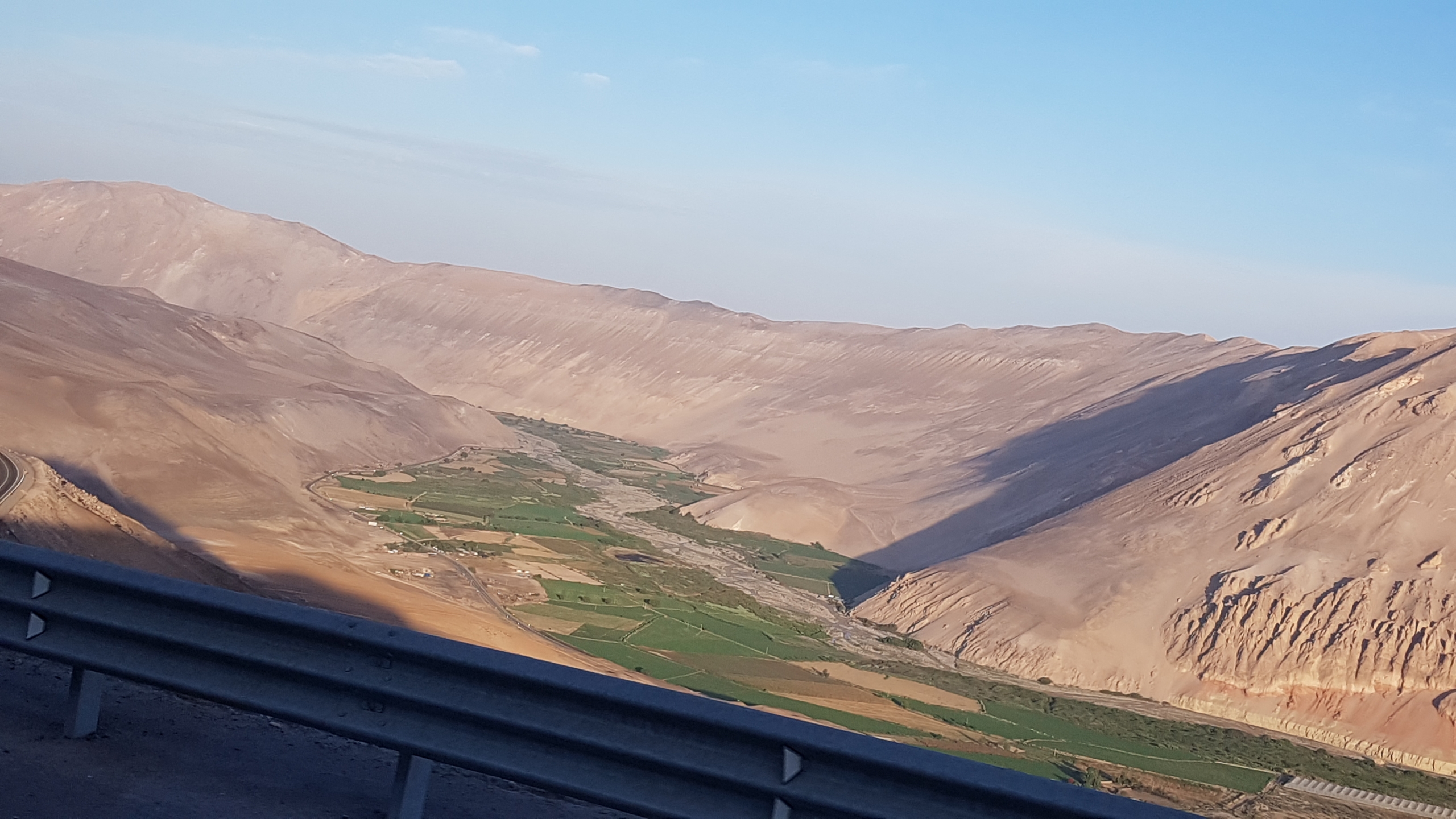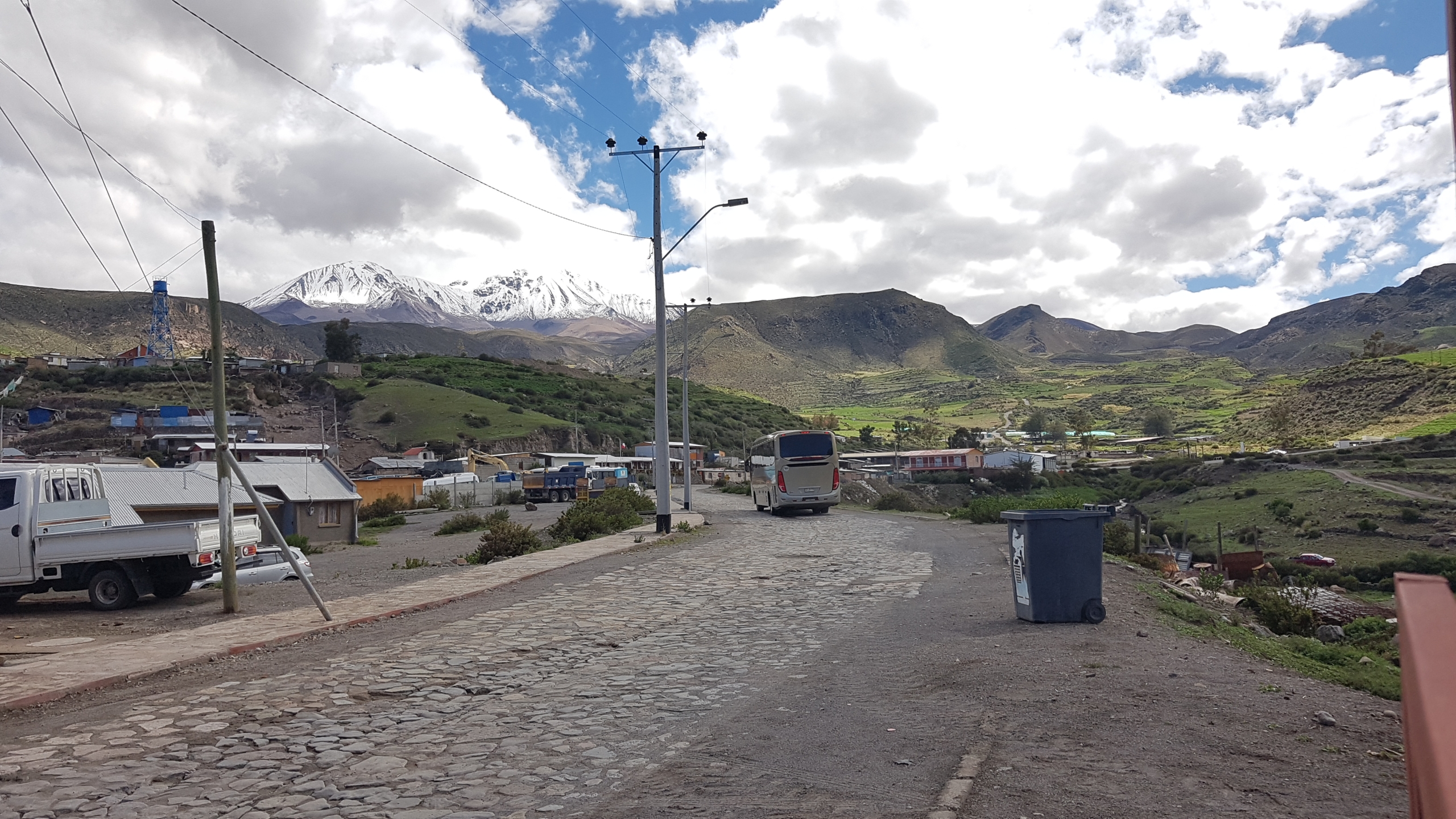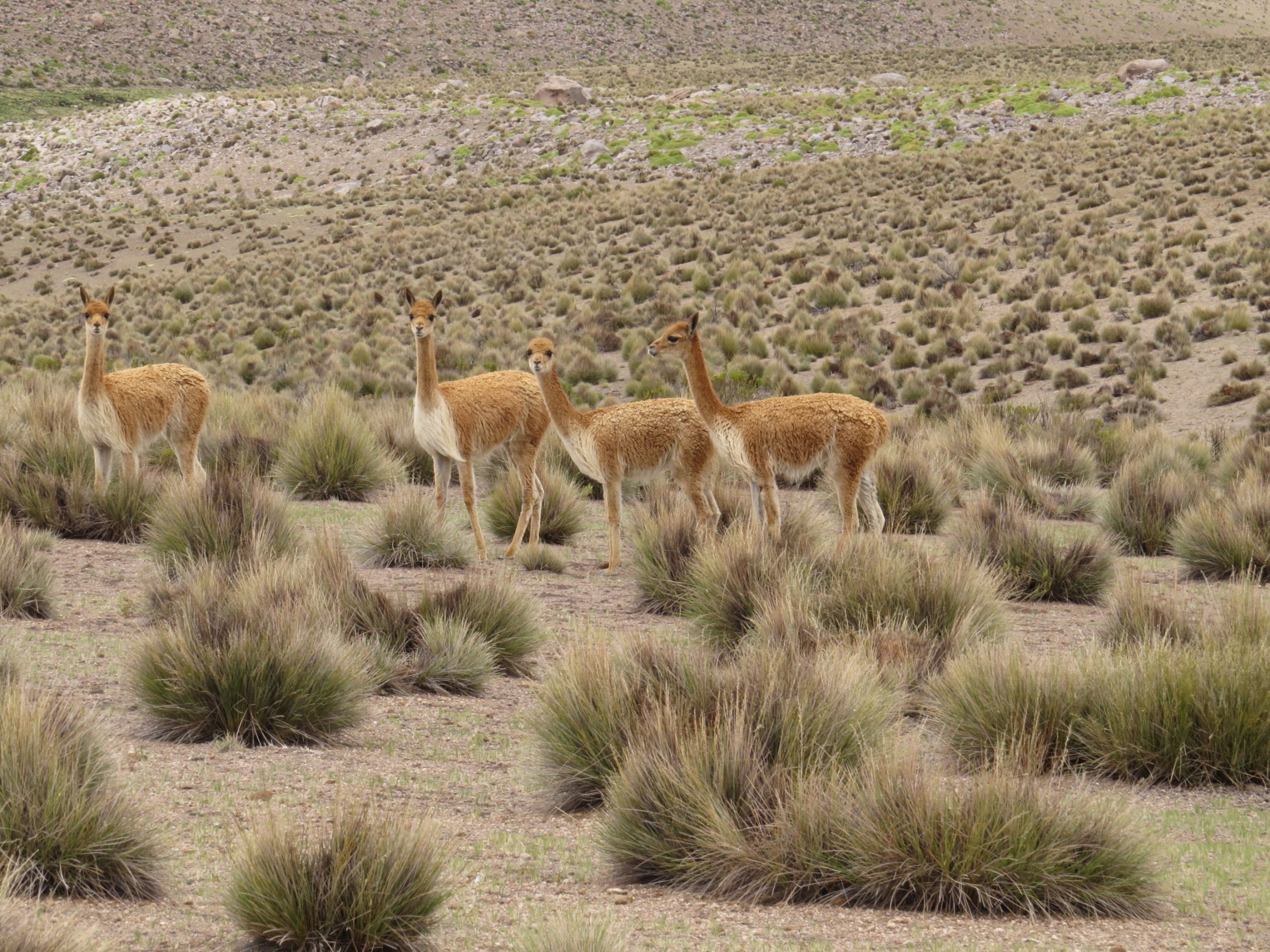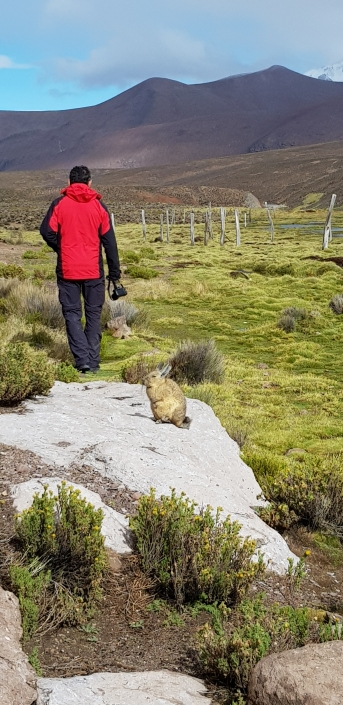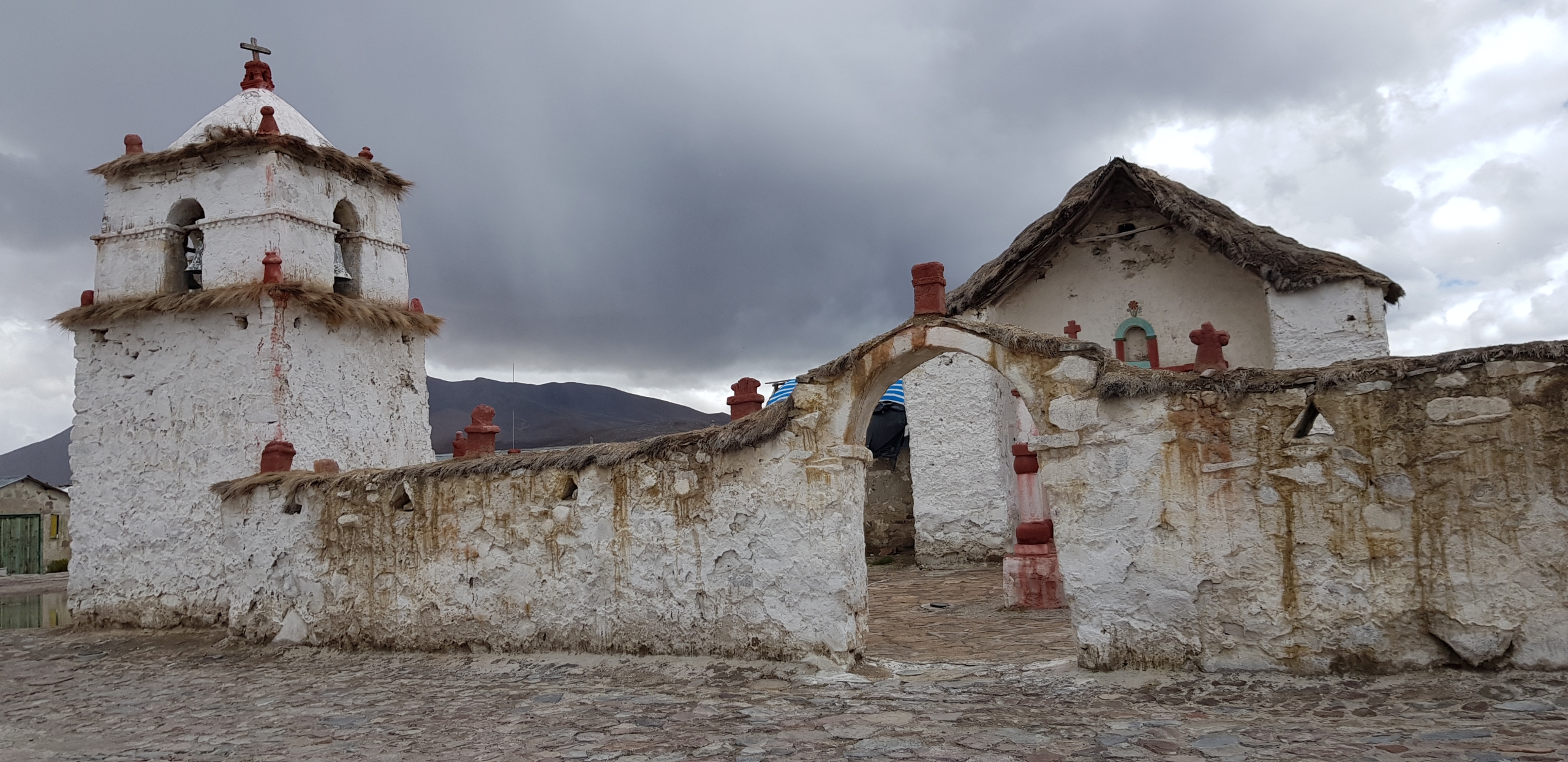Arica is located on the northern border of Chile with Peru. When we arrived there, we first noticed that the people on the street have strong Inca features and the skin color is considerably darker than the skin color of the Chileans in the south. Besides, there was carnival, and a very big one. Therefore we could not book a good hotel and we had to be content with a flophouse; by far the worst accommodation we had on the trip.
Arica itself has no particular sights but a very pleasant climate. It is called the City of Eternal Spring, and also wonderful, wide sandy beaches. From our hotel room we could watch a wonderful sunset. From our hotel room we could watch a wonderful sunset. The Cathedral of San Marcos was designed by the French architect Gustave Eiffel in Paris and transported by ship to Arica.
Arica served as a base camp for our expedition to the Altiplano. Unfortunately, it was not possible for us to book a trip to the Altiplano. Altiplano (English high plateau) is the Andes plateau and is over 4000 m high. And since there are not too many hotels and guesthouses there, we wanted to book accommodation and a guide before our arrival in Altiplano. All calls and emails were not answered or very high prices were requested.
That’s why we spent two days in Arica booking our trip to the Altiplano. And finally, after two days of searching, many calls and emails, we took the public bus to the Altiplano in the village of Putre on 11 February at 7:00 in the morning.
The bus leaves on a road with spectacular views within three hours from 0 to 3500 m! Putre is a typical Andean village with approx. 1500 inhabitants and serves tourists as a base camp for trips to the Altiplano. The inhabitants live from the farming on the terrace and from the cattle breeding. We were very curious how we will tolerate the mountain air, especially since we will drive over 4500 m in the next few days.
We took the advice of our landlady and ate relatively little and only light things and did not drink alcohol. As soon as you walked faster or climbed, you were out of breath. In addition, we did not do anything on the first day to acclimatize.
Before I start the trip description a small zoological lesson.
Next day we drove with our host Francisco to the Salar de Surir. Absolutely unexpected for us were the meadows full of animals and birds. Such a high number of animals and birds we had not expected this inhospitable environment and at this altitude. The Condor is a vulture and the largest bird in the Andes.
We spoke to a woman on the way from an almost abandoned village. They live there mainly from the meat and wool of the alpacas and llamas. It is a very barren life with temperatures in winter of -25 degrees centigrade. On the way, the driver prepared a delicious lunch snack on the loading area of his pickup. We did not reach our destination because the road was impassable due to rain and had to turn back.
The next day we drove to Lake Chungara. Already at the entrance to the national park is warned of free-running Viscunas. On the way we saw Viscachas, a hare-like animal that likes to sunbathe. On the well-developed main road, there are many tank trucks that bring oil from Bolivia to Arica. From there, the oil is transported by ship to Venezuela, refined and then returned by the same route. So much about pollution…
We drove to the Lagunas Cocotani, which glow emerald green at the feet of the more than 6000 m high volcanoes Parinacota and Pomerape. You drive for kilometres past a wetland called Bofedal. Bofedal form on peaty earth and the moisture stored in the earth or that of underground streams is released over time. Lake Chungara is said to be the highest lake in the world (4570m), and this was the absolute height record for us!
There we observed a couple of Andean whitefronts building their nest. On the way we visited the picturesque village of Parinacota with a 17th century church. The roof beams are held together for lack of nails with leather strips of llama skin and hold despite wind and rain for several hundred years.
And at the end of our wonderful journey through the Altiplano, Saint Peter has had an insight with us, the clouds have lightened and the twin volcanoes Parinacota and Pomerape and have shown themselves in full splendor. On the day of departure from Putre we were a bit excited because it had rained so much that the bus could not come to the village. However, the bus company was well prepared and we were driven with several minibuses to the main bus that has been waiting on the main road.
Absolutely impressed by Altiplano and also glad that we survived everything well, we went back to Arica by public bus and then on to Iquique on the Pacific coast.






